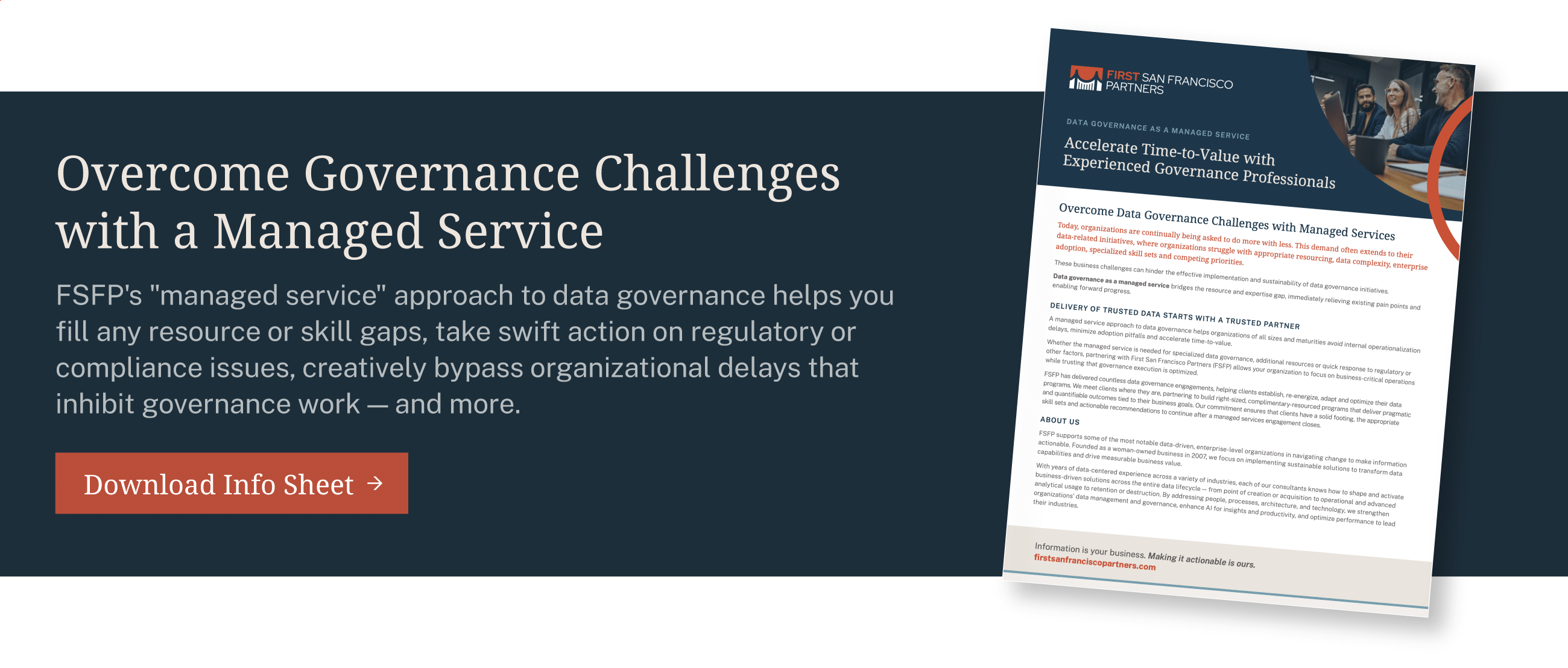Organizations turn to data governance software to help ensure their data delivers business value. Selecting a tool can become challenging, however, when you’re looking at features that are attained by wildly different tools and vendor philosophies across several distinct product categories. In some cases, several vendors may provide the same functionality in their products ─ but through very different means.
The third article in my Tech Target “Buying Decisions” series, How to Narrow Down Your Choices for Buying a Data Governance Tool, offers advice and a prioritization framework for deciding which data governance (DG) software features are most important for your organization, including:
- Information and data artifacts for managing key artifacts, such as data elements, data models and glossaries
- Data management elements for tracking activities and standards
- Other artifacts like documents or text-based materials, including manuals, charters, product specifications, digital media and emails
- Governance operations, like assigning and managing roles and responsibilities (e.g., data stewards), setting up the DG structure and monitoring service-level agreements
- Workflow management for accelerating and operating master data management processes or overseeing data quality
- Business alignment capabilities to help connect DG to other aspects of the organization
Before you read my advice for narrowing down the list of tools and key differentiation points, you might want to read my first and second installments, how DG software helps ensure data integrity and how to know if your organization is ready for it.
— Originally written for Tech Target by John Ladley August 25, 2016
John Ladley is a business technology thought leader and recognized authority in all aspects of enterprise information management. He has 30 years’ experience in planning, project management, improving IT organizations and successful implementation of information systems and is a widely published author.



